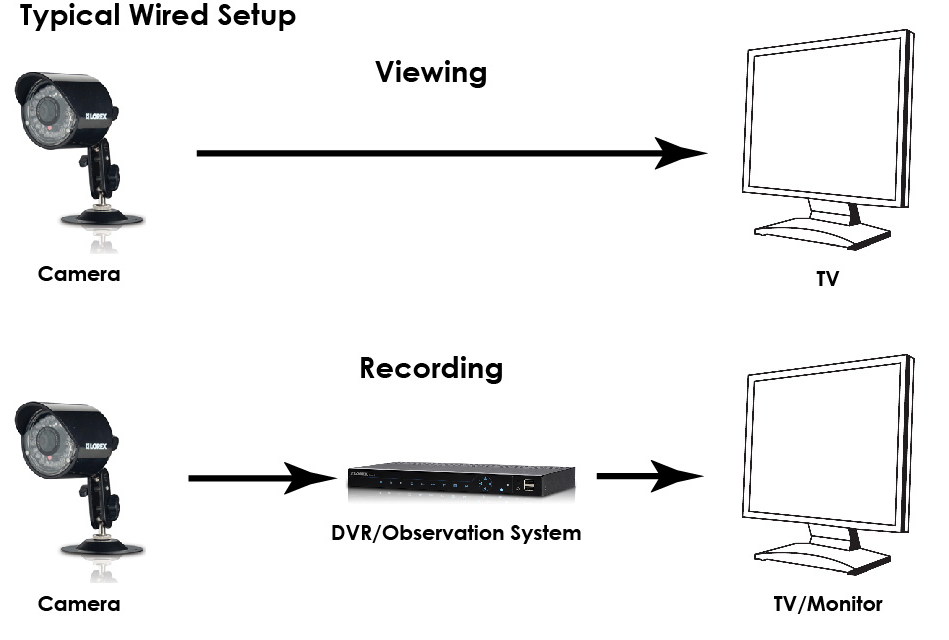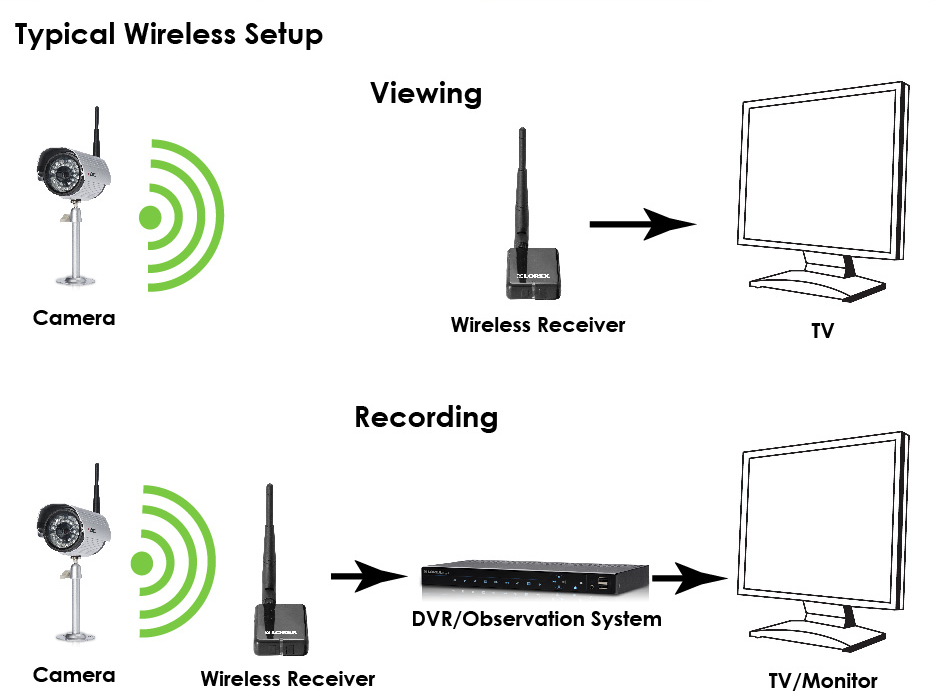Wireless Security Cameras: Frequently Asked Questions and benefits
Before purchasing a wireless camera be sure that wireless cameras are the right system for your needs.
IMPORTANT: Wireless camera means there is no cord between the camera and the receiver. The camera will still need a power connection.
Wired vs. Wireless Cameras
-
A wired camera has a video cable that transmits the video signal from the camera to a recording or viewing device.

-
A wireless camera does not use a video cable. Instead, it wirelessly transmits the video signal to a wireless receiver that is connected to your recording or viewing device. Although the typical digital wireless camera is priced slightly higher than a wired camera, wireless cameras can provide cost savings compared to standard wired setups. For example, wireless cameras do not require cabling to be run between the camera and the viewing / recording device, which reduces installation time and cost.

Wireless cameras can also be installed in places that wired cameras cannot, such as rented houses where the landlord does not allow cables to be run through walls or ceilings.
Characteristics of a Lorex by FLIR Wireless Cameras
- Lorex digital wireless cameras require two power sources: one connected to the camera, and the other connected to the receiver.
- Lorex by FLIR digital wireless products are secured with a wireless transmission method called FHSS— Frequency Hopping Spread Spectrum.
- Current Lorex by FLIR digital wireless cameras offer 10 - 30 FPS (Frames Per Second) performance.
Benefits of using wireless cameras:
- Wireless cameras are very quick and convenient to install when compared to wired cameras.
- Wireless cameras have many of the same features as wired cameras including IR night vision, motion detection and audio monitoring.
- The typical range for a wireless camera in ideal conditions is up to 500ft (152m). The range can be boosted with a wireless range extender.
- Wireless cameras are ideal for outdoor installations as less cable runs are required during installation.
Things to consider when purchasing wireless cameras:
- The recommended maximum number of wireless cameras to be used at one time is four. If more than four cameras are needed, wired cameras should be considered instead.
- Depending on location, competing wireless signals can interfere with wireless cameras. The DVR / NVR receiver should remain approximately 10ft (3m) away from the router, cordless phone systems, and any other devices using a wireless signal.
- Wall and other materials can also affect signal strength. Click here for more information on optimizing wireless signal range.